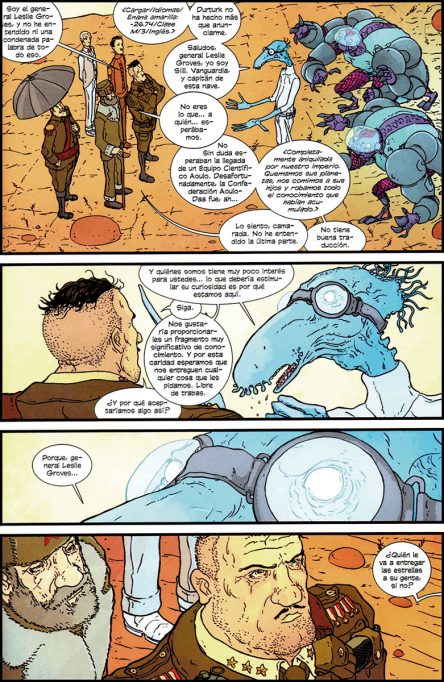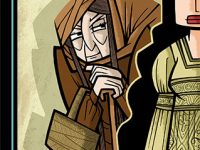The imaginary life of scientists
The Manhattan Projects comic-book series
This article analyses The Manhattan Projects comic-book series, which recounts an alternative ending to the Second World War, where the Manhattan Project hides another mission more closely related to science fiction. Here we discuss how the concept of the so-called «imaginary life», a term coined by Marcel Schwob, has been applied to the history of science in the twentieth century.
Keywords: Manhattan Project, imaginary life, Marcel Schwob, comics, metaliterature.
Introduction
At the close of the nineteenth century, the French author Marcel Schwob created the concept of «imaginary lives», which Jorge Luis Borges aptly described as stories where «the protagonists are real; the events can be imaginary and very often fantastic» (Borges, 1996: 486). Following on from Schwob (1979), the imaginary lives linked to the tradition of biography have been analysed in the field of comparative literature by scholars such as Bruno Fabre (2010), María José Hernández Guerrero (2002) or Francisco García Jurado (2008), who have all highlighted the relevance of this modern literary genre. Inspired by literary tradition, the comic has also used the lives of authors and historical figures to create its own fantasies. The comic mixes fiction and reality into a single narration where text and image work together, primarily to create new fictions based on literary authors such as Edgar Allan Poe and H. P. Lovecraft. The Manhattan Projects is an intriguing piece of work as it is based on the concept of imaginary lives and applies to people outside the literary world, specifically, the scientists who worked on the real Manhattan Project. As such, the work posits itself outside of the boundaries of comic biography, a genre which has lately flourished, in order to describe the lives of scientists using a new genre: imaginary lives.
Imaginary lives as a literary microgenre: Marcel Schwob
Between 1894 and 1896 the French author Marcel Schwob (1867-1905) published his work Imaginary Lives. This collection of stories is based on some known information and facts which are used to recreate the lives of different characters such as Empedocles, Lucretius, Paolo Uccelo, Pocahontas, Cyril Tourneur, Captain Kidd, or the well-known killers Burke and Hare, amongst others. Through these imaginary and imagined lives, Schwob offers readers an alternative version of official events passed down through history, turning what is real into stories and making the story the key aspect of these new biographical sketches. Schwob is not interested in heroic deeds, facts and figures endlessly recorded in history books or the theories which the authorities themselves expounded and published. He focuses on the details, peculiarities which humanise these exceptional people. It is precisely this story content, essentially human, which serves as the inspiration and driving force behind the imaginary lives. This is how, by moving between the thin line separating reality and fiction, the «imaginary life» becomes a sub-genre of biography, which had distinguished followers throughout the twentieth century such as Juan José Arreola, Joan Perucho, Antonio Tabucchi and Jorge Luis Borges. Indeed Borges’ book A Universal History of Infamy (1935) was described by the author himself as «a poor imitation» of Schwob’s work.
Bearing in mind these considerations, and following on from the work of Francisco García Jurado (2008: 47), «imaginary lives» can be summarised using three principle features: a) Brevity (which is apt for the type of biography it hopes to tell: secondary and anecdotal). b) Visionary, oneiric, and occasionally sordid. c) A notable metaliterary nature, whereby the author’s own life is mixed up with his work. Moreover, this constitutes «a clear awareness of witnessing a literary history which diverges from the official version» (García Jurado, 2008: 47).
Although not all imaginary lives embody the three features, there is a definite tendency to maintain and combine these criteria, this is the case of the imagined lives of certain scientists created in a comic such as The Manhattan Projects.
The biographic depiction of the Manhattan Project in comics
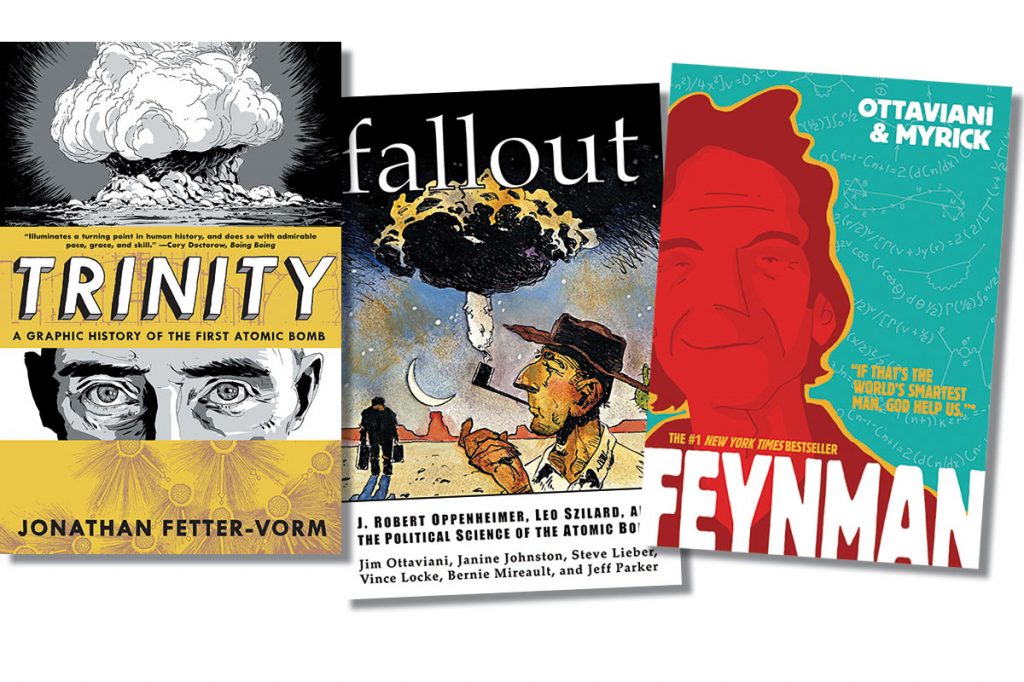
Figure 1. The biographies of scientists have recently been incorporated into the world of comics and graphic novels. Three examples of scientists’ biographies in comic books are: Trinity by Jonathan Fetter-Vorm; Fallout by Jim Ottaviani; and Feynman also by Jim Ottaviani and illustrated by Leland Myrick.
Given that the imaginary lives genre is closely linked to biography, it is interesting to consider how comics have dealt with the creation of the atomic bomb during the Manhattan Project. Only recently have comics and graphic novels begun to deal with the biographies of scientists. The genre is already a classic in literature and cinema, however, up until now it had not appeared so frequently in the world of comics. Within this recent trend, three examples of works relating to the Manhattan Project (Figure 1) are: Trinity, by Jonathan Fetter-Vorm; Fallout by Jim Ottaviani and various artists; and Feynman, again by Jim Ottaviani, this time accompanied by the comic artist Leland Myrick.
Trinity was published in 2012 and has the subtitle A graphic history of the first atomic bomb. The story centres on the first atomic bomb which was tested in the New Mexico desert in 1945. Some months later, the success of these tests would result in the Hiroshima and Nagasaki bombings. Trinity can be divided into two parts. Based on a didactic and rigorously impeccable historical approach, the first part deals with scientific and military processes which lead to the bomb’s development. Not only are the historical events well documented, there are also various and precise descriptions of nuclear energy which are easy for the reader to understand. The second part focuses on the launch of the bomb and its effects. Without losing historical accuracy, as it is based on testimonies of people involved in the launch, this part is more charged with emotion, analysing the consequences of the North American decision relating to the bomb. The historical rigour of the first part ensures that the message of the second part has a more profound impact upon the reader, as the author’s viewpoint is conveyed with the same precision as used with the scientific descriptions of the first part. Therefore, the work tries to bring about a consideration of how an event which has often been described as heroic, impacted on the consciousness of the American people.
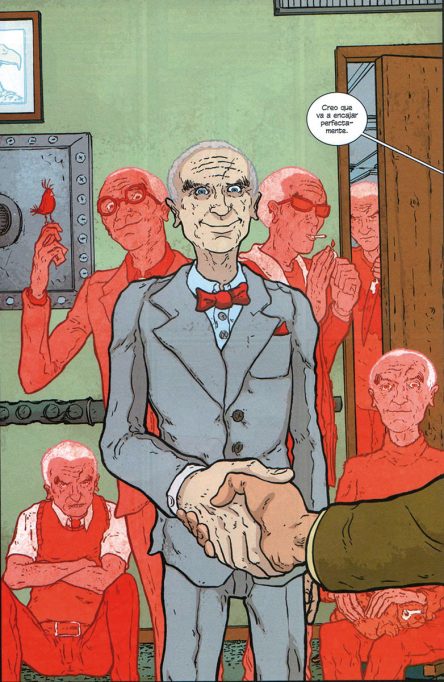
Figure 2. Oneiric representation of Oppenheimer’s multiple personalities. The Manhattan Projects is full of scientists’ dreams, especially of those who have been replaced by an evil double. Thus, Oppenheimer’s multiple personalities are portrayed through dream elements by the series. / Planeta deAgostini
Fallout was published in 2001 as part of a series bringing together biographies of scientists and the stories behind some of the greatest scientific achievements. The existence of this series shows the potential of comics to narrate biographies relating to science. Fallout is written by Jim Ottaviani and illustrated by various artists, whereby each artist illustrates one chapter of the book. Ottaviani’s idea was to remain as faithful as possible to the true story. Accordingly, any moments of artistic licence are documented at the end of the book, a standard practice in the genre of biography. What is interesting about this book is that it approaches the Manhattan Project as if writing the biography of a real person. The book is divided into four parts: birth, school, work and death, each referring to the project itself. Aside from its historical accuracy, the story is also consistent from a narrative perspective, and each of the comic artists offers appropriate visual solutions to each of the episodes narrated in their chapter. The only time where graphic storytelling power is diminished, is in the last chapter, death, which recounts the trial of Oppenheimer by inserting large text boxes including the letters Oppenheimer exchanged with the commission responsible for judging him. This inclusion burdens the narrative, and is unnecessary with regard to historical accuracy as demonstrated by the previous chapters. The reader gets lost in the text, and the comic’s narrative power, so potently exploited in the previous chapters, is diminished.
Jim Ottaviani is also the author of one of the most fascinating scientific biographies to appear in the last few years: Feynman, published in 2012. Not only does Ottaviani attempt to retell Feynman’s story, he also tries to convey his theories. He succeeds without losing the power to captivate the reader or the scientific accuracy. The part dedicated to the Manhattan Project is proportionate to its duration in Feynman’s life, and largely complements Ottaviani’s work in the Fallout series. It takes a closer look at issues such as security or the relationship between scientists and the government, not sufficiently covered in his previous work. Feynman’s personal life, marked by the illness and subsequent death of his wife, gives a special significance to this part of the story. The stupidity of war and aimlessness of science are evident when compared to the inevitable fate of Feynman’s wife. As such, Ottaviani creates a greater emotional impact with this work than was possible in a work such as Fallout, restricted by historical accuracy.
The Manhattan Projects and imaginary lives
The Manhattan Projects is a comic series created by the writer Jonathan Hickman with drawings by Nick Pitarra and published by Image Comics. It offers an alternative version of the end of the Second World War in which the Manhattan Project is only a cover up for other more esoteric science fiction ideas. The series is published monthly, it began in March of 2012 and is still being published. The series is marked by continuous jumps, cuts and various parallel stories in which Hickman interweaves science and politics whilst remaining aware of the stories behind each character. This work is an interesting metafictive exercise, as it constantly plays with the relationship between reality and storytelling, and contains a number of appropriate features to fall under the category of «imaginary lives». Let us consider some of these features. As González-Rivas and Sáez de Adana (2012) state, brevity is an inherent feature of comics, as the visual dimension allows certain narrative passages to be condensed, whilst in a novel these would require more extensive explanations. Although later compiled into volumes, each monthly episode can be viewed as a short story, one of Schwob’s favourite genres and a narrative genre characterised by brevity.
The presence of visionary, sordid and oneiric aspects is a constant feature in The Manhattan Projects. The story is full of scientist’s dreams, especially of those who have been replaced by an evil double such as Oppenheimer and Einstein. The series deals with Oppenheimer’s multiple personalities using oneiric devices (Figure 2), while Einstein is portrayed as a visionary. Indeed, all the scientists attempt to exploit The Manhattan Project’s resources to make their dreams come true. Even the military and politicians have their own vision, although it is heavily distorted. It is precisely the politicians and military who add a sordid tone to the story with their search for power regardless of the obstacles they encounter on the way. There is a powerfully sordid element in the description of Oppenheimer’s evil twin, a psychopath who eats his victims in order to acquire knowledge and their soul (Figure 3). There is also an element of mythology present within the descriptions made of the differing human and alien cultures (Figure 4) as well as a religious element to the ceremonies orchestrated by Harry S. Truman prior to his death (Figure 5).
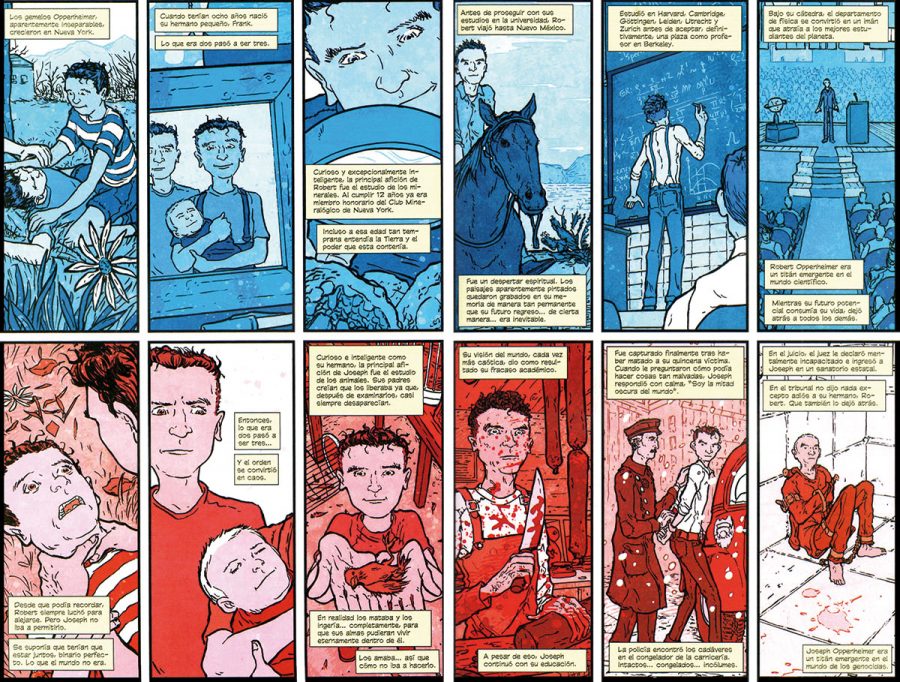
Figure 3. Oppenheimer and his evil twin. There is a great sordid strength in the description of Oppenheimer’s evil twin, a psychopath who eats his victims in order to acquire their knowledge and soul. / Planeta deAgostini
Finally, the most notable feature of the series is probably the strong metaliterary component, whereby the author’s life is mixed into the text. There is a clear intention to create an alternative biography, different to the official version but sharing certain common elements with real life. There are various examples of this idea throughout the series, some of which merit special consideration. Oppenheimer’s family problems are included in the work. Whilst in real life his brother was a communist sympathiser, here he is a psychopath who plays a role in the project. Leslie Groves, the army official in charge of the project, has a serious dispute with Oppenheimer regarding security and secrecy arrangements. This clash of interests is depicted in the series as a fight to fulfil his own ambitions. In real life, Einstein was only involved in the project start up. Here, he is portrayed as a shadowy figure, chasing after his own theories (Figure 6). In this metaliterary experiment which follows Schwob’s rules regarding imaginary lives, the behaviour of each character is ultimately modelled on the type of work they carried out in real life.
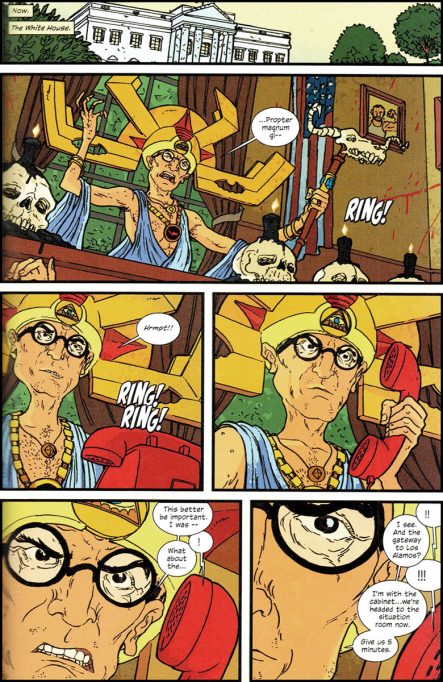
Figures 4 and 5, from left to right. A mythological element is present in The Manhattan Projects in the description of the different cultures, human and alien (bottom) and the religious element in ceremonies orchestrated by Harry S. Truman before his death (top). / Image Comics (top) and Planeta deAgostini (bottom)
There are various examples of imaginary lives in comics. The most prolific examples are the numerous imaginary lives of the gothic writers Edgar Allan Poe and H.P Lovecraft, as compiled in González-Rivas and Sáez de Adana (2012). There are two possible reasons for using imaginary lives in gothic fiction: firstly, Schwob’s own fiction included gothic elements, as he was an avid reader of gothic literature, and secondly, the fact that both Schwob and the aforementioned gothic writers were essentially short-story writers. What is interesting about The Manhattan Projects is that it is not the imaginary life of a famous figure but rather, involves a group of people. Therefore, the work is incredibly complex as all of the links must be established between the characters. One of the most interesting aspects of imaginary lives is the possibility of discovering the real events which sparked the creation of the imaginary story. If this search is already fascinating if it involves one character, in The Manhattan Projects it is a metaliterary exercise which constantly breaks down the barrier separating reality and fiction. In this regard, the work is always conscious of its status as artifice and, throughout its course, references are made to the real biographies of its protagonists. This permits two different reading approaches, one aimed at readers with a knowledge of the subject matter who can closely scrutinise the boundary between reality and fiction. The second method is for readers who approach the work without much background knowledge of the main characters. These readers can view the work as being completely fictional. Each of the characters not only displays traits corresponding to their real life counterpart, but the relationships between the characters also have these elements. What is more interesting still, is the addition of science as another ingredient in this metaliterary experiment. Scientific developments play a vital role in the creation of this imaginary life, along with the politics involved with these developments.
In his classic article «Behind Quantum Electronics: National Security as Basis for Physical Research in the United States, 1940-1960», Paul Forman (1987) acknowledges the fundamental role played by Project Manhattan in shaping modern science. In the United States at least, this science follows a model (in my opinion one which has been widely copied in Europe) which is based on government supervision of scientific developments. The largest investments are made on projects that will result in the greatest governmental benefits, which are often linked to the military. The Manhattan Project marks the moment where North Americans accepted that scientists were the first line of defence, and this idea has survived right up until today. After the Manhattan Project, not only did the United States’ government multiply their financing for science, they also clearly defined the objective of this financing. This idea is the basis of the imaginary life depicted in The Manhattan Projects. Science is the driving force which guides the world depicted in the series, and the war to control science provides the storyline behind the series. All things considered, this life is not so far from reality.
Another important characteristic of the series is that it has been continued. Previously, imaginary lives depicted in comics were generally made up of graphic novels, single issues or limited series, namely, formats with a beginning and an end. The fact that this is a continuous series does not contravene the notion of brevity regarding imaginary lives as defined by Schwob, bearing in mind the series’ structure. Although there is continuity, each monthly episode is a standalone story. Therefore, each piece of this imagined life is told within the concise space of 22-25 pages per episode. However, as previously mentioned, this imaginary life is more complex than its precedents. A series as complex as The Manhattan Projects needs to be conceived as an unlimited series because ultimately, it is not just recounting the imaginary lives of a group of scientists, it tells the story of science in the twentieth century. As previously mentioned, science changed subsequent to the Manhattan Project. A new idea of science was born and lives on long after the project has finished. It is not possible to have an ending when retelling the imaginary life of this scientific model. Whilst the model survives, the series must continue.
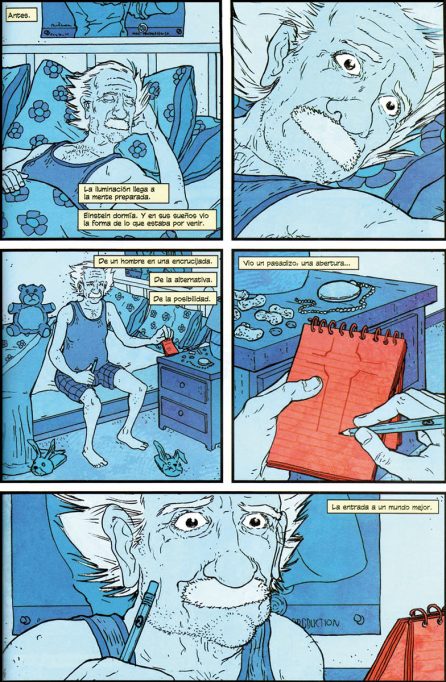
Figure 6. Einstein was only one element in The Manhattan Projects’ depiction of real life. Here he is a shadowy figure chasing his own theories. / Planeta deAgostini
Conclusions
This article has analysed how the imaginary lives concept can be applied in The Manhattan Projects. This work deals with the imaginary lives of a group of scientists, in order to ultimately depict the imaginary life of twentieth-century science. Although each chapter of this imaginary life is formed as a short story in accordance with the genre’s principle of brevity, this instance is more complex than other previous imaginary lives and each story forms part of an expansive tapestry in the form of a continuous and unlimited series, which is appropriate for a scientific model that has not yet reached its limits. Metaliterature and oneiric elements of imaginary lives are also included in the narrative, and constitute a clear example of how Schwob’s model has been applied to comics. This use of the model in visual narratives has been employed previously, especially in the case of gothic writers, but never with such complexity or on such a large scale.
One interesting aspect of the work is the use of the comic genre to spread scientific knowledge. Although this work concerns an imaginary reality, this article has shown how there are other examples, which, using the comic genre, narrate the process of the creation of the atomic bomb via visual narratives. This is not an isolated case, and over the last few years the comic genre has been used on numerous occasions to spread scientific knowledge, Logicomix, a biography of Bertrand Russell is one such example; or Cosmicomic, concerning the discovery of the Big Bang, or the collection Scientists published by Jordi Bayarri which has included biographies of Darwin, Newton and Galileo amongst its issues. This is not a new phenomenon, as in the eighties the North American company Radioshack offered clients a free comic series aimed at providing children with scientific information. However, the current publication of the graphic novel concept has ensured that the comic genre is no longer considered solely a children’s medium. This has made it easier to publish works such as those already mentioned where the spread of scientific knowledge is aimed at the general public. This is the result of the comic taking on board the creation of works from all types of genres, including the spread of scientific knowledge. This change also means that these works are generally undertaken with excellent scientific accuracy.
The main advantage of this format is that it allows the spread of scientific knowledge to a group of readers who would otherwise not approach the topics, as they are not consumers of works traditionally labelled as non-fiction. However, by presenting the information in comic form, the works are not labelled in that way and remain attractive for this sector of the public. Moreover, the medium’s new maturity allows it to transcend classical scientific biography inherited from cinema tradition in order to include samples of well-developed theories amongst its pages, and often with great accuracy. The examples cited in this article transcend the biographical genre and also include theories associated with the principal scientists of each respective work. They do so with pedagogic aims, and in the majority of cases the comic storylines manage to retain some of the rigour associated with the popularisation of high quality scientific information.

